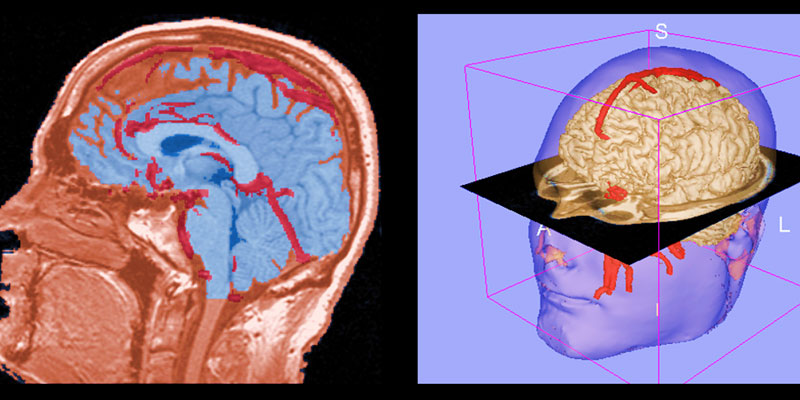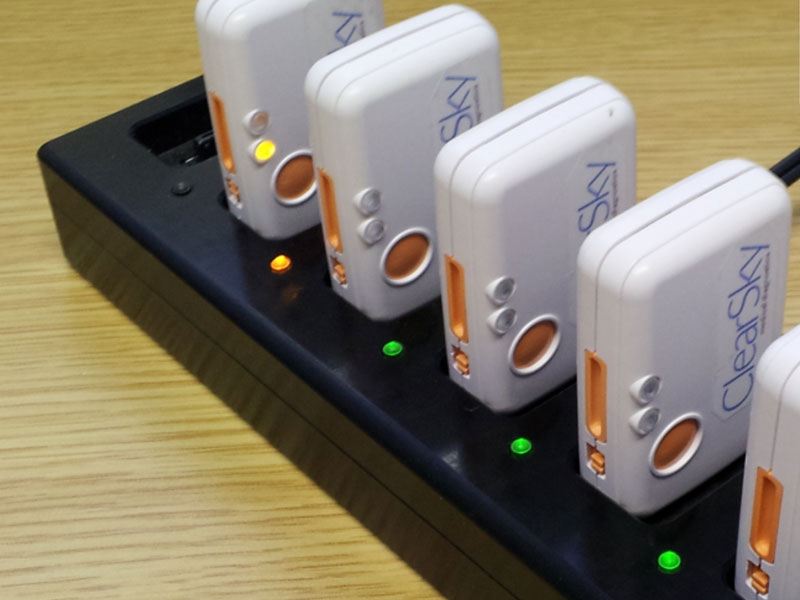
Healthcare engineering
The Healthcare Engineering group undertakes research with the goal of improving the way we understand, diagnose and treat the human body in health and disease.
The group makes extensive use of sensing and measurement technologies, assistive technologies and analysis and modelling techniques.
We seek to integrate data from different organisational levels: molecular, cellular and systems, and adopt an interdisciplinary approach working with colleagues in the life sciences and medicine.
Our work includes:
- Algorithms to assist with diagnosis
- Assistive robotics for diagnosis, healthy living and surgery
- Biomechanics, orthopaedics and prosthetics
- Biomolecular and biomedical sensing technologies
- Design of bioelectronic and medical devices
- Medical imaging and imaging guided intervention
- Metaverse and investigative virtual technologies
- New ways to analyse and model biological processes
Research activities
We are a subgroup of Healthcare Engineering at the School of Physics, Engineering and Technology. We consist of 10 academics focused on research into movement science and restoration of movement to patients. Research topics cover a diverse range of skills, from development of MEMS sensors, to AI based signal analysis for automated assessment of neuro and musculoskeletal (MSK) degenerative conditions, to human machine interactions with assistive robotics.
For further details visit the Movement Science and Engineering website, or email peter.ellison
The Robot-Assisted Living Laboratory is a state-of-the-art robotic laboratory led by Dr Jihong Zhu. We are based in the Institute for Safe Autonomy, University of York, the UK. Our lab is committed to advancing the capabilities of robots to empower individuals with diverse abilities in their daily lives. Through a multidisciplinary approach, we combine expertise in control and machine learning to develop robots that seamlessly integrate with the environment and intuitively respond to user needs.
For further details visit the RALLA website, or email jihong.zhu
Our research in biomedical ultrasound and photonics is at the cutting edge of developing innovative diagnostic and therapeutic technologies, bridging fundamental science with clinical applications. We focus on using acoustics and optics to investigate and understand tool/tissue interfaces for tissue characterization and interventional medical devices. Our activities include:
- Development of Biomedical Ultrasound and Optical Coherence Tomography (OCT) Systems: Creating high-resolution imaging technologies for diagnosing medical conditions and monitoring treatments, including applications in angiography and elastography.
Ultrasonic Tools for Therapeutic and Surgical Use: Designing and assessing ultrasonic tools for tissue cutting and ablation, focusing on their effectiveness and safety. - Tissue Characterization and Phantom Fabrication: Evaluating the mechanical, acoustic, and optical properties of tissues and phantoms, and calibrating medical devices and imaging systems. This includes using imaging data to generate 3D anatomical models to aid in diagnostics, treatment planning, and surgical simulations.
- Imaging Optimization and Artificial Intelligence: Improving image quality, automating analysis, and integrating data through ongoing research, which enhances diagnostic accuracy, procedural efficiency, and patient care.
- Clinical Translation in Dermatology and Ophthalmology: Advancing diagnosis and treatment in dermatology (eg, skin diseases and cancer) and ophthalmology (eg, corneal and retinal conditions). Insights from tissue characterization and imaging are applied to cancer treatment and wound healing, improving therapeutic strategies and outcomes.
We offer PhD opportunities for students with backgrounds in medical sciences, imaging, technology, and engineering. Potential projects may involve exploring fused imaging techniques, developing miniature sensing devices, or addressing clinical challenges through translational research. For further information, email Professor Zhihong Huang (zhihong.huang
Our research is focused on the innovation of new technology inspired by biological principles. We develop hybrid systems that merge the functions and properties of biological systems with the world of electronics. We have a particular expertise in the integration, detection and manipulation of biological materials, such as DNA, peptides and proteins, with electronic devices.
Our research is highly cross-disciplinary and we collaborate closely with scientists and engineers from across physics, chemistry, molecular biology and the clinical and social sciences.
For further information, visit the Bio-Inspired Technologies Lab website or email steven.johnson
We develop a multi-sensor CMOS chip as a point-of-care personal metabolome machine to map activity of multiple enzymes on substrates to detect metabolites. These help with the prognosis of diseases related to metabolome such as different forms of cancers, diabetes and coronary artery diseases. Our research interests includes:
- Bio-sensors for Point-of-care diagnostics and therapeutic monitoring
- Sensors for drug resistance monitoring
- CMOS sensors
- Devices for Large Area Electronic Applications
- CMOS compatible processing of MEMS for ASIC integration
- Process Integration for semiconductor fabrication
- Nano-metrology tools
- Magnetoresistive Sensors
- Thin Film Materials
- Organic TFTs
- Integrated device of spin-valve and MEMS to detect ultra low magnetic field for the bio-imaging
- Devices on flexible plastic substrates
- Use of non-conventional materials for the device processing
For further information, email samadhan.patil
Computational Neuroscience involves interaction between the Physical Sciences (Engineering, Mathematics, Statistics) and Life Sciences (Neuroscience, Psychology, Neurophysiology) which aims to understand the operation of the nervous system through the use of techniques which include mathematical analysis of neural signals, and modelling of the electrical activity in single neurones and groups of neurones.
For further information, visit the Computational Neuroscience Lab website or email david.halliday
Our work focuses on the automated assessment of Parkinson’s disease and other neurodegenerative conditions based on the measurement and analysis of movement disorders and visuo-spatial ability. Features associated with symptoms of these neurological conditions are used to train novel evolutionary algorithms to aid diagnosis, monitoring and administration of medication.
Our technology has the potential to transform clinical practice allowing patients to be monitored with greater accuracy than previously possible in hospital and their own homes, leading the way to saving money and improving the patient’s quality of life. Devices developed by our group are in clinical use in leading medical centres worldwide.
For further information, view the Stephen Smith lab pages or email stephen.smith
The Laboratory for Investigative Virtual Environments (LIVE) specialises in medical diagnostics and rehabilitation technology. We apply aspects of life sciences (especially the natural features of human cognition) to technology, and using technology to understand cognition, human processes and intelligence.
We combine the biological and the engineering sides, and one kind of feeds into the other. This encompasses a wide variety of research areas including:
- Virtual and augmented environments
- 3D display methods
- Stroke
Low vision and gait rehabilitation technology - Locomotion simulators
- Human visuomotor interactions in locomotion
- Visual neurophysiology and perception
For further information email adar.pelah
REAMA (Robotics engineering in Associative Medical Applications) Lab uses quantitative engineering analysis to gain a better understanding of the human body and the technologies that we interface with it. With our expertise in soft robotics, biophotonics, medical imaging, and machine learning, we focus on enabling technologies for surgical intervention, patient rehabilitation, surgery and diagnosis of chronic diseases.
For further details visit the REAMA website, or email manish.chauhan
We work on many different problems where electromagnetics and electronics meet. Sometimes this is in obvious ways such as antennas for wireless systems but often work is concerned with EMC issues where the radiated fields are unwanted.
The group is highly regarded in the EMC field and the Bilog antenna, now standard in EMC measurements, was designed at York.
Research involves a mixture of measurement techniques and computer simulations with the latter proving ever more important as the global number of electronic devices - all of which need to meet electromagnetic regulations - increases. As well as research into the effect of electromagnetic radiation on electronic systems there is also research into biological systems, for example to detect body water content.
Recent research in the group includes fly-by-wireless aircraft, uncertainty analysis in numerical modelling and chip immunity.
For further information, email Martin Robinson (martin.robinson

Spinouts
ClearSky Medical Diagnostics Ltd. was spun-out in 2013 to commercialise research into intelligent medical devices for the diagnosis and monitoring of Parkinson’s and related conditions.
Recent projects
For examples of our most recent work, see our Engineering for health projects page.
Staff
- Dr Manish Chauhan
- Professor Helena Daffern
- Dr Hadi El Daou
- Dr Peter Ellison
- Professor David Halliday
- Dr Stuart Higgins
- Professor Zhihong Huang
- Professor Steven Johnson
- Professor Gavin Kearney
- Dr Mohammad Nasr Esfahani
- Dr Samadhan Patil
- Dr Adar Pelah
- Dr Martin Robinson
- Professor Stephen Smith
- Dr Chun Zhao
- Dr Jihong Zhu